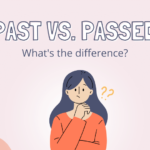Language can be a bit confusing, and one of its essential elements is pronouns. Pronouns help in communication by replacing nouns, preventing repetition, and making sentences smoother. In this article, we’ll look into what pronouns are, their types, and examples of how they’re used in different situations.
What Are Pronouns?
Pronouns are words that substitute for nouns in a sentence. They’re versatile and can act as subjects, objects, possessives, or even reflexives, providing flexibility and clarity in language.
What are the Types of Pronouns?
Pronouns come in various types, each serving a specific function in a sentence. Let’s break down the main categories:
- Personal Pronouns
- Relative Pronouns
- Demonstrative Pronouns
- Indefinite Pronouns
- Interrogative Pronouns
- Reflexive Pronouns
- Reciprocal Pronouns
- Subject and Object Pronouns
Personal Pronouns:
Represent specific persons or things and change form based on their role in a sentence.
Examples: I, you, he, she, it, we, they
| Subject | Object | Possessive Adjective | Possessive Pronoun |
| I | me | my | mine |
| You | you | your | yours |
| He | him | his | his |
| She | her | her | hers |
| It | it | its | its |
| We | us | our | ours |
| They | them | their | theirs |
Relative Pronouns:
Introduce relative clauses, connecting them to the main clause.
Examples: who, whom, whose, which, that
| Usage | Example |
| Subject | The person who called is my friend. |
| Object | The book which I borrowed is excellent. |
| Possession | This is the girl whose dog is missing. |
Demonstrative Pronouns:
Point to specific things or people.
Examples: this, that, these, those
| Usage | Example |
| Proximal (near) | This is my favorite restaurant. |
| Distal (far) | Those are the mountains I want to climb. |
Indefinite Pronouns:
Refer to nonspecific people or things.
Examples: all, some, any, none, everyone, nobody
| Usage | Example |
| Singular | Somebody is at the door. |
| Plural | Many have tried, but few have succeeded. |
| Singular/Plural | All are welcome to join. |
Interrogative Pronouns:
Used to ask questions.
Examples: who, whom, whose, which, what
| Usage | Example |
| Asking about | Who is coming to the party? |
| Asking for | What do you want for breakfast? |
| Possession | Whose keys are these? |
Reflexive Pronouns:
Indicate that the subject of the sentence performs an action on itself.
Examples: myself, yourself, himself, herself, itself, ourselves, yourselves, themselves
| Usage | Example |
| Singular | I cut myself while cooking. |
| Plural | They praised themselves for the effort. |
What are Pronouns and How do they Contribute to Language?
Pronouns, such as I, you, and they, replace nouns in sentences, preventing redundancy and enhancing fluidity. Acting as subjects, objects, or possessives, pronouns play a vital role in communication, making language clearer and more versatile.
Examples of Pronoun Usage:
Personal Pronoun:
- Example: She is going to the market.
- In this sentence, “she” is a personal pronoun representing a specific person.
Relative Pronoun:
- Example: The book that I’m reading is fascinating.
- Here, “that” is a relative pronoun connecting the dependent clause to the main clause.
Demonstrative Pronoun:
- Example: This is the house I grew up in.
- “This” points to a specific house, serving as a demonstrative pronoun.
Indefinite Pronoun:
- Example: Everybody should bring their own lunch.
- “Everybody” is an indefinite pronoun representing a nonspecific group.
Interrogative Pronoun:
- Example: What are you doing this weekend?
- “What” is an interrogative pronoun, introducing a question.
Reflexive Pronoun:
- Example: He taught himself how to play the guitar.
- “Himself” is a reflexive pronoun, indicating the subject performed the action on himself.
Frequently Asked Questions (FAQs):
Q1: What is the primary purpose of pronouns?
Pronouns serve the primary purpose of replacing nouns in a sentence to avoid redundancy and enhance clarity in communication. They act as versatile placeholders that can function as subjects, objects, possessives, or reflexives.
Q2: Can you provide more examples of personal pronouns?
Certainly! Here are some additional examples of personal pronouns:
- Singular:
- She is coming to the party.
- He finished his homework.
- Plural:
- They are my classmates.
- We enjoyed the movie.
Q3: How do I distinguish between proximal and distal demonstrative pronouns?
Proximal demonstrative pronouns refer to something near, while distal demonstrative pronouns refer to something far. For instance:
- Proximal: This is my favorite restaurant. (near)
- Distal: Those are the mountains I want to climb. (far)
Q4: When should I use indefinite pronouns?
Indefinite pronouns are used when referring to nonspecific people or things. Examples include:
- Somebody is at the door.
- Many have tried, but few have succeeded.
Q5: What is the role of reflexive pronouns in a sentence?
Reflexive pronouns indicate that the subject of the sentence performs an action on itself. Examples include:
- I cut myself while cooking.
- They praised themselves for the effort.
Q6: Can a pronoun be both singular and plural?
Yes, some pronouns can be singular or plural based on context. For instance, the indefinite pronoun “all” can refer to a singular or plural group:
- Singular: All is forgiven.
- Plural: All are welcome to join.
Conclusion:
Pronouns are crucial for effective communication, offering a way to avoid repetition and make language more fluid. By understanding the types and examples provided, you can master the use of pronouns in various contexts, enhancing your ability to communicate clearly and efficiently.


